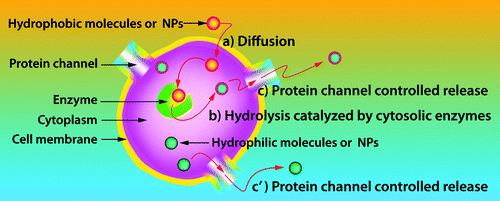Using living cells as an 'invisibility cloak'

The quest for better ways of encapsulating medicine so that it can reach diseased parts of the body has led scientists to harness -- for the first time -- living human cells to produce natural capsules with channels for releasing drugs and diagnostic agents. The report appears in ACS' journal Nano Letters.
In the report, Dayang Wang and colleagues explain that the human body is very efficient at getting rid of foreign substances. Some foreign substances, such as viruses, are harmful and should be removed. But the body also considers drugs and nanoparticles — meant to treat diseases and allow physicians to see cells and organs — to be foreign objects, and they are also quickly removed.
To help these substances stay in the body longer, scientists have tried to fool it by encapsulating these substances in coatings that more closely resemble natural cells. Over the years, researchers have tested many different artificial coatings, but they failed to stay in the body for very long. So, Wang and colleagues set out to make a better capsule — by using living cells as an "invisibility cloak".
Because the group's so-called "cell membrane capsules" (CMCs) were made from real living cells, they tricked the body into thinking they were supposed to be there. Thus, drugs and nanoparticles inside CMCs stayed in the body much longer than those inside other encapsulation materials. "Hence the CMCs provide the first intrinsically biocompatible and functional drug delivery and release vehicles," say the researchers.
More information: “Cells as Factories for Humanized Encapsulation” Nano Lett., 2011, 11 (5), pp 2152–2156
Abstract
Biocompatibility is of paramount importance for drug delivery, tumor labeling, and in vivo application of nanoscale bioprobes. Until now, biocompatible surface processing has typically relied on PEGylation and other surface coatings, which, however, cannot minimize clearance by macrophages or the renal system but may also increase the risk of chemical side effects. Cell membranes provide a generic and far more natural approach to the challenges of encapsulation and delivery in vivo. Here we harness for the first time living cells as “factories” to manufacture cell membrane capsules for encapsulation and delivery of drugs, nanoparticles, and other biolabels. Furthermore, we demonstrate that the built-in protein channels of the new capsules can be utilized for controlled release of encapsulated reagents.
Provided by American Chemical Society



















